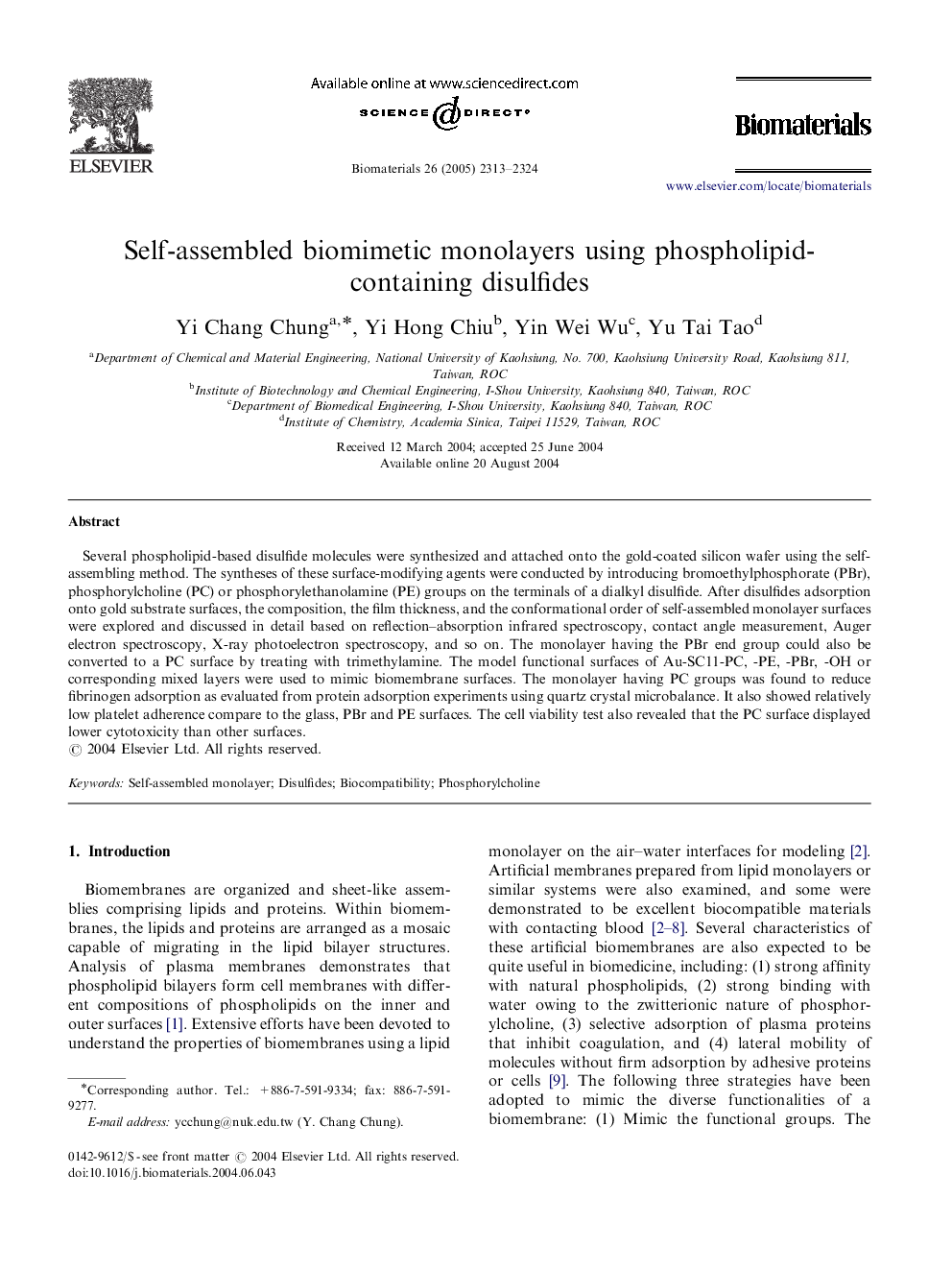| کد مقاله | کد نشریه | سال انتشار | مقاله انگلیسی | نسخه تمام متن |
|---|---|---|---|---|
| 12798 | 818 | 2005 | 12 صفحه PDF | دانلود رایگان |

Several phospholipid-based disulfide molecules were synthesized and attached onto the gold-coated silicon wafer using the self-assembling method. The syntheses of these surface-modifying agents were conducted by introducing bromoethylphosphorate (PBr), phosphorylcholine (PC) or phosphorylethanolamine (PE) groups on the terminals of a dialkyl disulfide. After disulfides adsorption onto gold substrate surfaces, the composition, the film thickness, and the conformational order of self-assembled monolayer surfaces were explored and discussed in detail based on reflection–absorption infrared spectroscopy, contact angle measurement, Auger electron spectroscopy, X-ray photoelectron spectroscopy, and so on. The monolayer having the PBr end group could also be converted to a PC surface by treating with trimethylamine. The model functional surfaces of Au-SC11-PC, -PE, -PBr, -OH or corresponding mixed layers were used to mimic biomembrane surfaces. The monolayer having PC groups was found to reduce fibrinogen adsorption as evaluated from protein adsorption experiments using quartz crystal microbalance. It also showed relatively low platelet adherence compare to the glass, PBr and PE surfaces. The cell viability test also revealed that the PC surface displayed lower cytotoxicity than other surfaces.
Journal: Biomaterials - Volume 26, Issue 15, May 2005, Pages 2313–2324